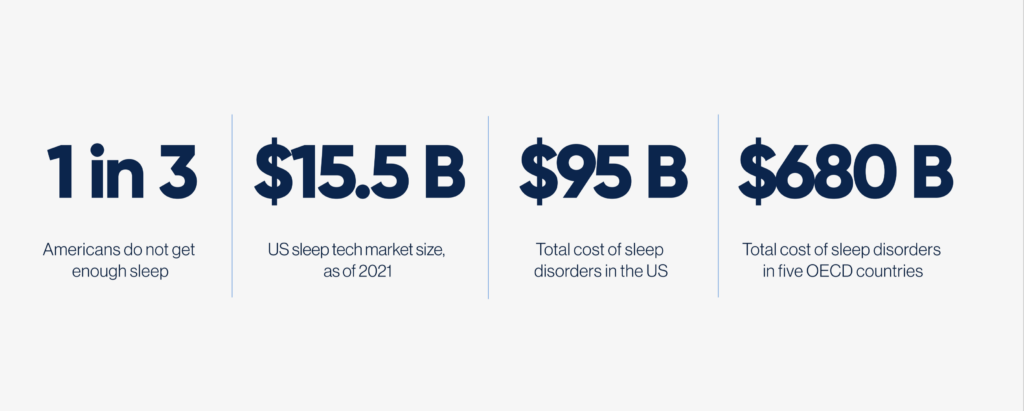For centuries, humans have been fascinated by sleep, and our understanding of it has traced an arc from mythic to scientific. In the early 20th century, the advent of electrophysiological recordings measuring brain activity provided a significant boost to sleep and dream research.
These discoveries opened the door for the investigation of the links between sleep and health, and led to the development of new technologies for diagnosing and treating sleep disorders.
Fast forward to today, as global sleep awareness grows, the need and demand for effective sleep innovation is more acute than ever.
Sleep Loss Epidemic by the Numbers

Sleep has become a critical market precisely because a society without rest pays a premium. Workplace absences, a decline in productivity,
and an increase in healthcare expenses due to sleep- deprivation-related maladies can cost companies—and countries—billions.
Capital Investment and Deals in the Sleep Tech Market

Venture capital investment has steadily increased to a total of +$5B over the past decade, with an upsurge following COVID-19 pandemic-induced sleep disturbances.
Despite capital market slowdowns in 2022 in response to the interest rate environment, Joy’s internal research of 450 sleep-tech companies indicates a strong investment appetite in the sleep-tech market.
Available Sleep Technologies on the Market

The global sleep tech devices market size was valued at USD15,407 Million in 2021 and is estimated to reach the value of USD 60,955 Million by 2030, growing at a CAGR of 16.8% from 2022 to 2030.
As the next era of sleep science and innovation ushers in, this brief offers a glimpse into the future and includes insights on topics such as:
- The current state of the sleep economy
- Investors’ appetite for available sleep technologies and their respective revenue potential
- Perspective from leading neuroscientists on advancements and future trends in sleep and circadian rhythm innovation
- Two research angles that we believe are ripe for exploration:
1. Sleep and Wake Optimization
2. Sleep as Data

